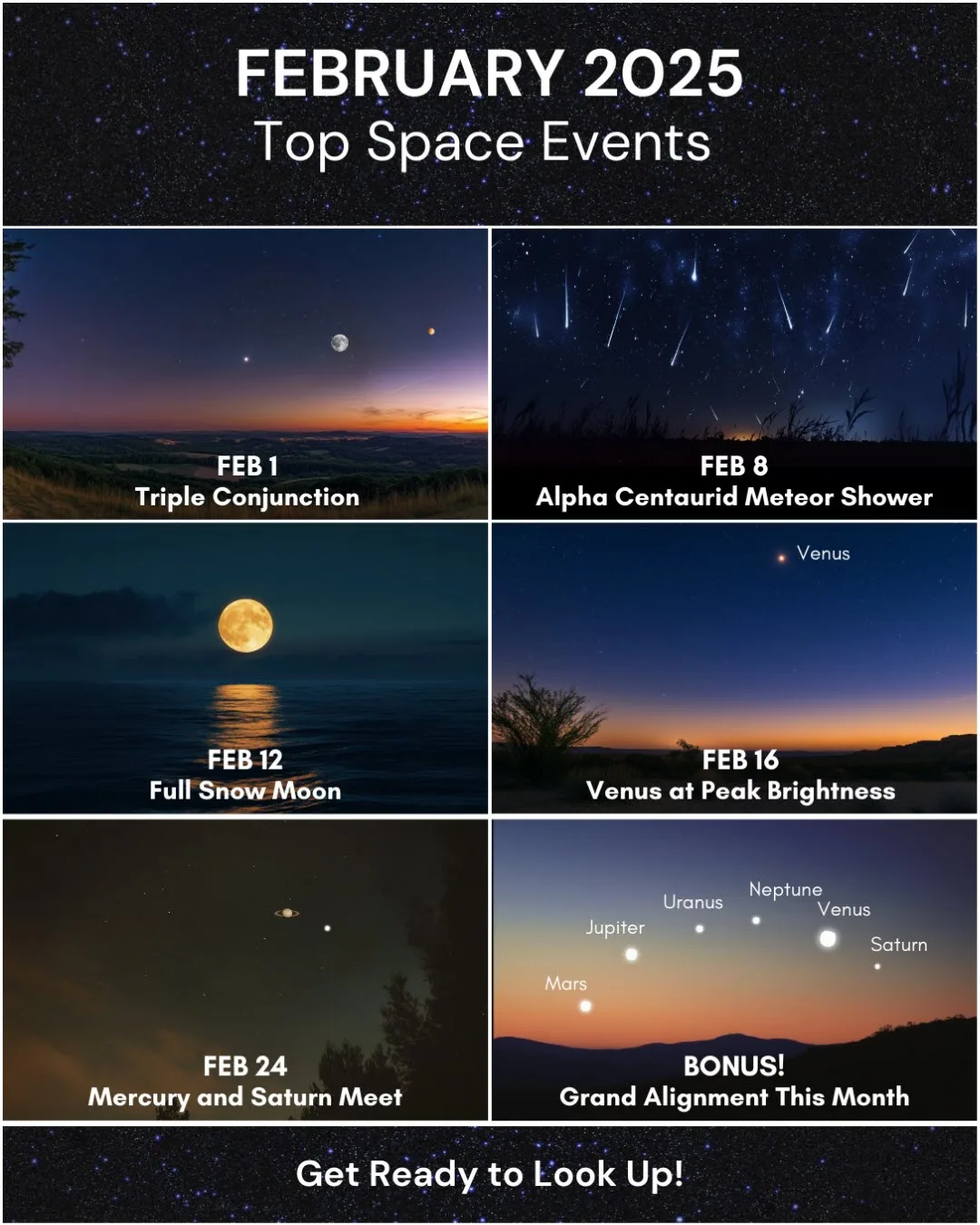Get ready to look up! Here are the top celestial events to catch this month

February 1:
In astronomy, a conjunction occurs when any two astronomical objects (such as moons, planets, etc.) appear to be close together in the sky, as observed from Earth. This month, a triple conjunction of the Moon, Venus, and Neptune was visible in the Pisces constellation on Feb 1.
February 8:
The Alpha Centaurid meteor shower, also known as the α-Centaurids, will peak. If you’re in the Southern Hemisphere, you’ll get a stunning view.
February 12:
The second full Moon of the year happens on Feb 12. A full snow moon is the nickname for the full moon that occurs in February due to the heavy snowfall that typically happens in the Northern Hemisphere. To calculate exactly when the moon will be at its brightest near you, consult the Farmer’s Almanac’s moonrise calculator.
February 16:
Venus will reach its peak brightness — blazing in the night sky the brightest it will be all year. It will shine the most just after sunset with an impressive 4.6 magnitude.
February 24:
Mercury pairs up with Saturn for a very close encounter in the West at sunset.
Planet Parade Continues:
And most important of all — the planet parade continues (but will end) this month. February 1 through 9, you can still catch the event. Six planets — Venus, Mars, Jupiter, Saturn, Uranus, and Neptune — align in the night sky, offering a rare and spectacular “planetary parade.” So get out there, and look up!


